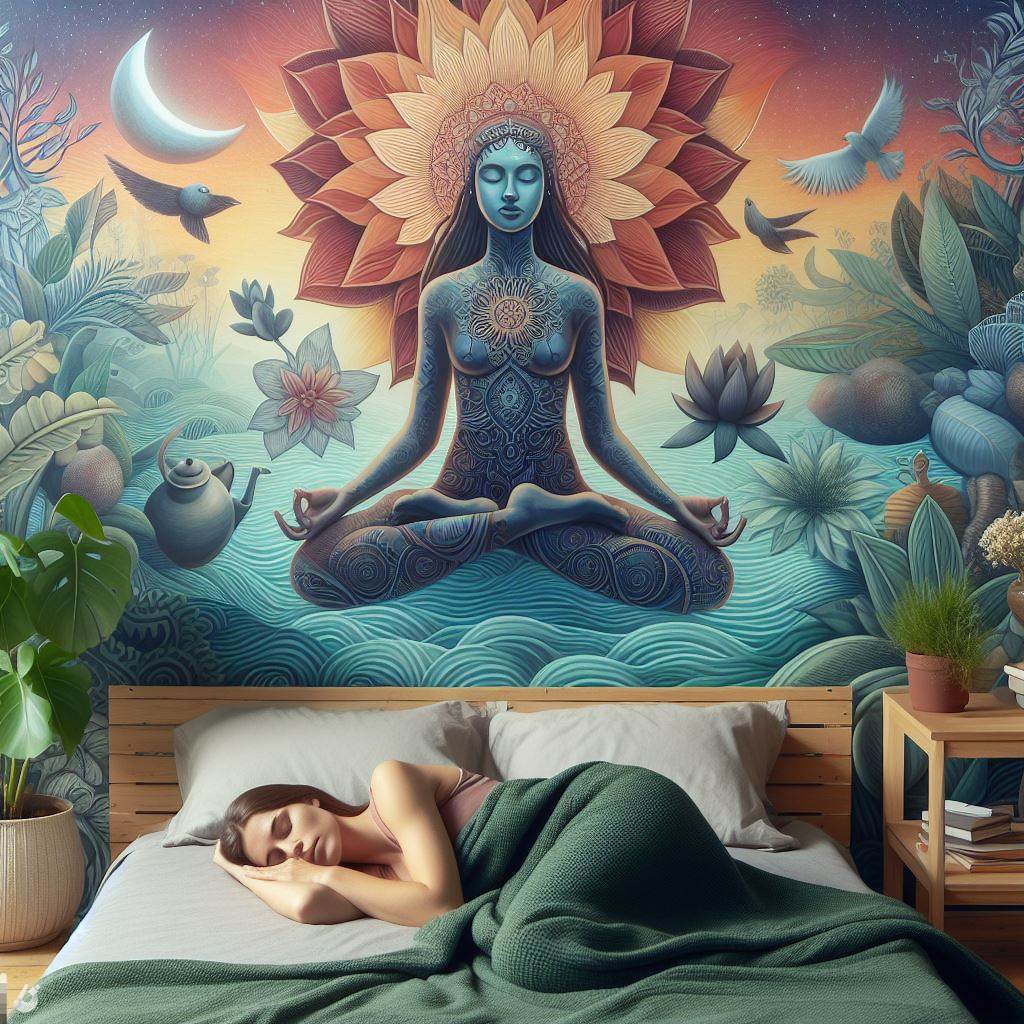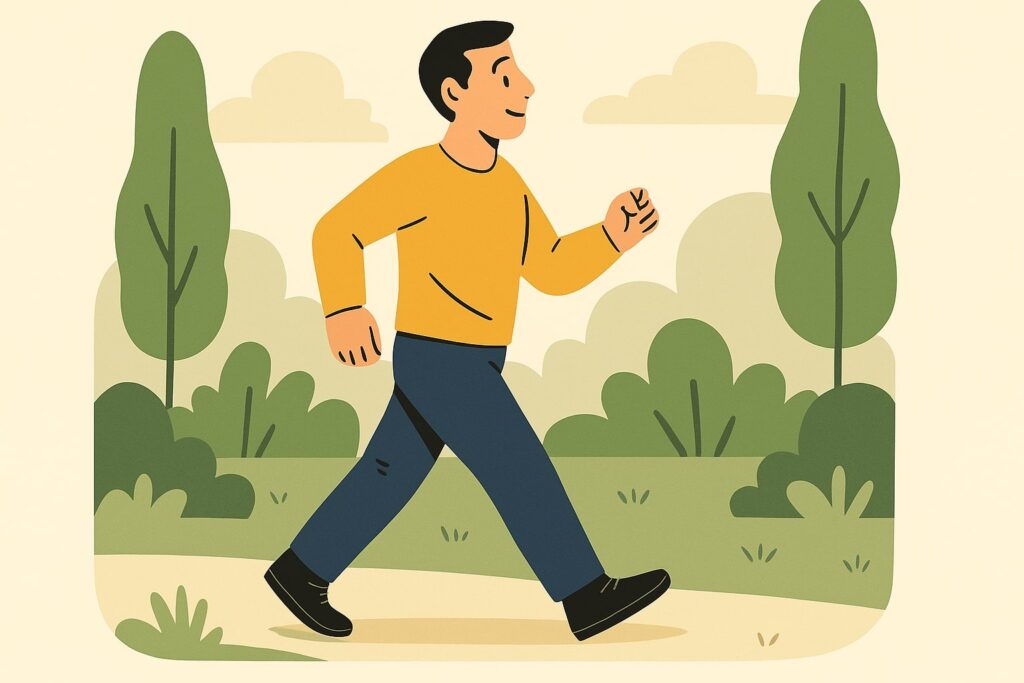Index of Contents
ToggleIntroduction
Challenges in falling asleep, maintaining sleep, or experiencing restorative rest at night can affect mental, emotional, and physical well-being. With increasing stress and anxiety levels in modern life, more and more people are experiencing insomnia and seeking effective treatment options. Yoga therapy has emerged as a natural, non-invasive, and result-oriented solution that addresses insomnia while promoting overall wellness.
In this comprehensive blog, we will delve deep into the practice of yoga therapy for insomnia, understanding the science behind it, introducing various yoga techniques to improve sleep, and sharing practical tips to make yoga therapy an integral part of your daily routine.
The Science Behind Yoga and Improved Sleep
Yoga originated in ancient India more than 5,000 years ago and operates on the fundamental principle of unifying the body, mind, and spirit. Yoga comprises physical postures (asanas), breath control (pranayama), and meditation techniques to enhance overall mental and physical health. One of the numerous benefits of practicing yoga includes its ability to promote better sleep quality naturally.
Several scientific research studies have endorsed the effectiveness of yoga in treating insomnia. A survey conducted by the Journal of Clinical Sleep Medicine indicated that a 12-week yoga intervention improved sleep efficacy, duration, and quality in patients who have chronic insomnia. The study emphasized the significance of yoga in reducing stress, improving mood, promoting relaxation, and fostering an overall sense of well-being.
Furthermore, yoga’s influence on the autonomic nervous system and the release of the stress hormone, cortisol, has earned it the reputation of being an effective sleep therapy. By lowering cortisol levels through yoga, practitioners can manage their stress and anxiety, which often contribute to insomnia.

Yoga Techniques for Insomnia
There is a vast array of yoga practices that can cater to specific sleep-related issues. With the right combination of techniques, practitioners can tailor their relaxation and prepare for a better night’s sleep. Here’s a detailed overview:
1. Asanas (Postures)
Yoga poses designed to relax the body and calm the mind can significantly benefit those who suffer from insomnia. Incorporate the following asanas into your pre-sleep routine for relaxation:
- Legs-Up-The-Wall Pose (Viparita Karani): This gentle inversion helps to relax the legs, lower back, and nervous system. Lie down on your back and position your legs up against the wall to mimic an “L” shape. You can place a folded blanket under your hips for added support. Hold the pose for 5-15 minutes while focusing on deep, slow breaths. This pose can help alleviate leg fatigue from standing or sitting all day.
- Child’s Pose (Balasana): This restorative pose relieves tension in the back, neck, and shoulders. Begin by sitting on your heels, then fold your upper body forward, stretching your arms out before you. Allow your forehead to rest on the floor or a cushion. Draw your attention to your breath and the gentle compression around your heart. Hold for 2-3 minutes or longer, as needed.
- Reclining Bound Angle Pose (Supta Baddha Konasana): This gentle hip-opening pose relaxes the pelvis and abdominal region. Lie on your back with your knees bent and the soles of your feet touching. Allow your knees to fall open toward the ground, supporting the outer thighs with pillows or bolsters if necessary. Hold the pose for 5-10 minutes, focusing on deep, slow breaths as you release the tension in your hips and lower back.
- Reclining Twist (Supta Matsyendrasana): This pose releases tension in the spine and helps to calm the nervous system. Lie on your back with your knees bent and feet flat on the floor. Drop both knees to one side, keeping your shoulders flat on the floor. Extend your arms out to the sides like a “T” and turn your head to the opposite side of your knees. Hold for 1-3 minutes before switching to the other side.
2. Pranayama (Breath Control)
Breathing techniques are known for promoting relaxation and a calm state of mind. They can be practiced alone or in combination with yoga poses to improve sleep quality. Here are some proven breath control exercises:
- Alternate Nostril Breathing (Nadi Shodhana): This method of mindful breathing helps balance the energy in your body and calms the mind. Sit in a comfortable position with your spine tall. Close your right nostril with your right thumb and inhale through your left nostril. Now, close your left nostril with your right ring finger and exhale through your right nostril. Inhale through the right nostril, close it and exhale through the left nostril. Continue this rotation for about 5-10 minutes.
- 4-7-8 Breathing Technique: This technique is known for calming the nervous system and alleviating anxiety. Sit or lie comfortably and close your eyes. Inhale through your nose for a count of four, hold your breath for a count of seven, and exhale through your mouth for a count of eight. Repeat this cycle four times, and gradually increase to eight cycles as you get comfortable with the practice.
- Diaphragmatic Breathing: This form of deep breathing targets the diaphragm, essential for relaxation and stress relief. Lie down on your back and place one hand on your chest and the other on your abdomen. Inhale slowly and deeply through your nose, feeling your abdomen rise under your hand. Exhale slowly and completely through your mouth, allowing your abdomen to fall. Continue this technique for 5-10 minutes.
3. Meditation
Meditation is instrumental in promoting mind-body relaxation, reducing stress and anxiety, and preparing the brain for sleep. Here are two common meditation techniques that can help improve sleep quality:
- Guided Visualization: Lie down comfortably and mentally visualize a peaceful scene, such as a sandy beach, serene forest, or mountain stream. Focus on the details, engage your senses, and immerse yourself in the tranquility of the environment. Allow any thoughts or distractions that come to your mind to fade away as you maintain your focus on the visualization. Practice for 10-20 minutes.
- Body Scan Meditation: Begin at the top of your head and travel down through your entire body, releasing tension from each muscle group as you go. Mentally focus on each body part, taking note of any discomfort or tightness, and encourage relaxation with each exhale. End at your toes, feeling completely relaxed and at ease. Practice for 10-20 minutes.
Tips for Integrating Yoga Therapy for Insomnia into Your Daily Routine
- Establish a consistent yoga routine, ideally before bedtime, to signal your body that it’s time to wind down and prepare for sleep.
- Create an inviting sleep environment by decluttering your bedroom, adjusting the room temperature for comfort, and using blackout curtains to block out light.
- Make a conscious effort to unplug from electronic devices at least an hour before your practice. The blue light emitted from screens can interfere with the production of melatonin, the sleep hormone, making it harder to fall asleep.
- Avoid stimulating activities, caffeine, and heavy meals close to your bedtime yoga practice.
- Be patient with your progress and be open to adjustments in your practice based on your evolving needs and preferences.
Conclusion
Yoga therapy offers a natural, holistic approach to addressing insomnia, enhancing sleep quality, and improving overall well-being. Incorporating specific yoga postures, breath control techniques, and meditation exercises into your daily routine can significantly impact your body, mind, and overall sleep patterns. Embrace consistency and patience, and watch the benefits of yoga therapy unfold in your journey toward restful nights and revitalized days.




1 thought on “Yoga Therapy for Insomnia: A Holistic Approach to Enhance Sleep Quality”